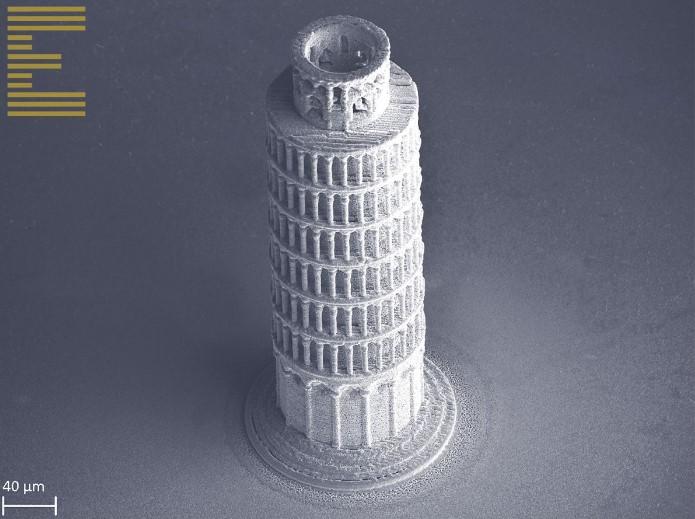- FMA
- The Fabricator
- FABTECH
- Canadian Metalworking
Our Publications
Categories
- Additive Manufacturing
- Aluminum Welding
- Arc Welding
- Assembly and Joining
- Automation and Robotics
- Bending and Forming
- Consumables
- Cutting and Weld Prep
- Electric Vehicles
- En Español
- Finishing
- Hydroforming
- Laser Cutting
- Laser Welding
- Machining
- Manufacturing Software
- Materials Handling
- Metals/Materials
- Oxyfuel Cutting
- Plasma Cutting
- Power Tools
- Punching and Other Holemaking
- Roll Forming
- Safety
- Sawing
- Shearing
- Shop Management
- Testing and Measuring
- Tube and Pipe Fabrication
- Tube and Pipe Production
- Waterjet Cutting
Industry Directory
Webcasts
Podcasts
FAB 40
Advertise
Subscribe
Account Login
Search
Small print: 3D-printing of microparts
It’s now possible to additively manufacture parts just 1 µm in diameter
- By Kip Hanson
- December 14, 2021
Thirty-some years ago, I attempted to machine a staple intended for vascular surgery. It was supposed to have the diameter of a human hair. The buyer, who worked at a well-known medical company, couldn’t source such staples elsewhere and asked me to machine some.
I failed miserably. Despite my weekend-long efforts, I was unable to get the cutting tool sharp enough and the spindle speed high enough to turn anything more than a crude approximation of the desired product.
The exercise gave me an appreciation for microsized parts, however, which is why I take a certain glee in the following statement: It’s now possible to 3D-print parts just 1 µm in diameter (0.00004")—100 times smaller than the target of my long-ago lesson in machining humility.
I once wrote for a magazine that focused on micromanufacturing. It was there I learned to use words like “miniscule,” “teeny,” “diminutive,” and, my favorite, “Lilliputian.” It now looks like I’ll get to use them again, because additive is going places that were once unthinkable.
Imagine additively manufacturing an anatomically accurate version of Michelangelo’s David on the end of my erstwhile staple, or a series of highly detailed Leaning Towers of Pisa. Microscale metal 3D printer manufacturer Exaddon has produced those objects, which are little more than show-and-tell examples of its capabilities. But the Swiss company’s work in neuroprosthetics, MEMS devices, and other mircro-AM componentry is serious business.
Add to this the development of 3D-printable carbon-nanotubes, graphene, quantum dots, and other nanoparticles and it raises endless possibilities for microminiaturization.
In hindsight, 3D printing has been breaking the rules of conventional manufacturing for more than three decades; we should have expected that it would one day delve into the ridiculously petite.
There are certainly other developments in this important (albeit, tiny) space. Truth be told, though, I didn’t go looking any further than the two just mentioned. My goal here is not promotion, but the sharing of my wonderment at all that 3D printing can accomplish.
So stay tuned. AM is taking us places few of us can foresee, many of which will be exceedingly small.
About the Author

Kip Hanson
About the Publication
- Podcasting
- Podcast:
- The Fabricator Podcast
- Published:
- 04/16/2024
- Running Time:
- 63:29
In this episode of The Fabricator Podcast, Caleb Chamberlain, co-founder and CEO of OSH Cut, discusses his company’s...
- Trending Articles
- Industry Events
16th Annual Safety Conference
- April 30 - May 1, 2024
- Elgin,
Pipe and Tube Conference
- May 21 - 22, 2024
- Omaha, NE
World-Class Roll Forming Workshop
- June 5 - 6, 2024
- Louisville, KY
Advanced Laser Application Workshop
- June 25 - 27, 2024
- Novi, MI




























